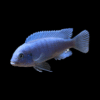To provide the best experiences, we use technologies like cookies to store and/or access device information. Consenting to these technologies will allow us to process data such as browsing behaviour or unique IDs on this site. Not consenting or withdrawing consent, may adversely affect certain features and functions.
The technical storage or access is strictly necessary for the legitimate purpose of enabling the use of a specific service explicitly requested by the subscriber or user, or for the sole purpose of carrying out the transmission of a communication over an electronic communications network.
The technical storage or access is necessary for the legitimate purpose of storing preferences that are not requested by the subscriber or user.
The technical storage or access that is used exclusively for statistical purposes.
The technical storage or access that is used exclusively for anonymous statistical purposes. Without a subpoena, voluntary compliance on the part of your Internet Service Provider, or additional records from a third party, information stored or retrieved for this purpose alone cannot usually be used to identify you.
The technical storage or access is required to create user profiles to send advertising, or to track the user on a website or across several websites for similar marketing purposes.

 Red Devil Vampire Crab - Geosesarma Hagen - Decapod Crustacean
1 × £8.71
Red Devil Vampire Crab - Geosesarma Hagen - Decapod Crustacean
1 × £8.71 












Emma Wallis (verified owner) –
I recently purchased the Albino Golden Mbuna Cichlid, and I couldn’t be happier! As an experienced hobbyist, I appreciate a fish that not only adds color but also thrives in a well-maintained environment. These Malawi cichlids are not only visually stunning with their bright yellow and white hues, but they also have such a lively personality! After about two weeks in my 75-gallon tank, they’ve settled in beautifully and are often seen playfully swimming around.
What really sets them apart from other cichlids I’ve kept is their active nature without being overly aggressive. I’ve noticed they interact well with my other fish, which is a relief! However, keep in mind that they do require a bit of rocks and hiding spots, as they feel more secure that way.
They eat flake and pellet food readily, which is a plus for easy feeding. If you’re looking for a vibrant and engaging fish to enhance your aquarium experience, I highly recommend the Albino Golden Mbuna! Just be sure to provide them with a proper setup and tank mates that complement their personality. Trust me, they’ll bring such joy to your aquarium!